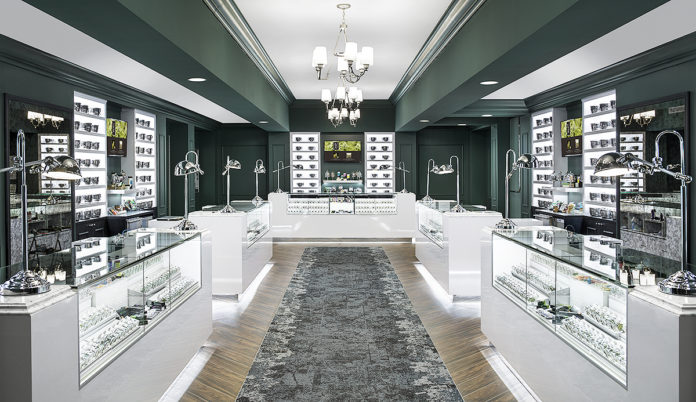Cannabis oversupply in states like Oregon and the resulting potential for black-market diversion rightfully are causes for concern. In fact, “Too Much of a Good Thing: The West Coast Is Swimming in Weed” from the October issue of mg shares insights about that very topic. For vertically integrated dispensaries that heavily rely on selling products they grow themselves, this market-change can be a scary experience. In contrast, for dispensaries that source their offerings entirely from the wholesale market, the reality presents some big opportunities to leverage ample supply and lower prices. As my partner and I prepare to open our own dispensary, these are things we are thinking about, too. We are a retail-only license holder, completely reliant on the health of the wholesale market to supply the products we curate for our shelves.
Whether a dispensary grows its own supply or enjoys the wholesale glut, here are five ways to dig deep into business strategy to define a competitive advantage, differentiate from the competition, and grow market share in challenging times.
It’s all about the brand
A defined brand is the foundation of any successful retail business. Branding reflects a business’s mission and purpose, and if it is missing the company lacks substance. Consumers expect more from their retail experiences these days, no matter what merchandise they seek. A carefully considered and crafted brand communicates the personality and ethos of your business. It is your style, your tone—your distinct signature and the guiding principle for every business decision. Your brand stakes your claim on your desired market. It is how you attract your ideal audience and why they can’t help being fiercely loyal. It’s why I’ve spent $6 on an avocado at Whole Foods; why I’ve earned A-List Preferred Status, a Companion Pass, and 200,000 Rapid Rewards points with Southwest Airlines; why I would take a $100 Uber ride to buy Wyld Boysenberry gummies if necessary. Think about the brands to which you are loyal and why you love them. Then think about why consumers should be loyal to your brand and your dispensary. Invest the time, energy, and capital to connect with them.
Texas Original Cannabis Company is an excellent example. This vertically integrated dispensary understood the importance of an authentic brand and a carefully crafted retail experience. The logo and retail space convey a true sense of Texas pride, quality medicine, and professionalism. The brand communicates the dispensary’s dedication to serving the special needs of epileptic customers and families and a commitment to shifting cultural attitudes and expectations about cannabis.
Be a destination; deliver an experience
Energy and capital are about building your brand to be more than a place to buy some pot—the exact same pot with which every other dispensary in town is overflowing. The most successful retailers and brands today are the ones who invest in creating memorable experiences start to finish. In all customer touchpoints—from website and brick-and-mortar dispensary to staff and purchasing process—every step on the customer journey counts. What can you do to engage customers? This is where the design of a brand can play a key role by creating memorable, Instagrammble, legendary moments. If customers take photos and share with the world, they are happy and engaged. A successful brand experience breeds loyalty and establishes a brand’s position in the market.
Gnome Grown Organics’s two retail locations in Oregon City, Oregon, are the embodiment of a brand dedicated to legendary organic cannabis cultivation practices, stewardship of nature, and passion for quality. Every detail of the brand’s retail experience is inspired by the life story of one of the founders and carefully crafted to connect with every visitor in the most subtle and authentic manner. And what about the Gnome Grown gnome? Everyone wants to hang out with him.
Create memorable packaging and presentation
The retail experience includes every detail, so it’s important to focus on how products are packaged and presented from first glance to final transaction. Think about the methodical way your favorite clothing store carefully removes the hanger, folds the shirt, wraps it in branded tissue paper, secures it with a foiled sticker, and places it into a branded shopping bag. I’ve left clothes in the bag for weeks after purchasing simply because I didn’t want to unwrap the pretty little package. Sugarfina has taken a traditionally juvenile commodity—candy—and elevated the experience to luxurious and adult-focused. Whether your brand is best activated by wrapping products in eco-friendly cardboard or employing an elegant, multi-layered packing protocol, think about the moment of delivery. These final moments leave a lasting impression, and the lovely wrapped package or cool bag will turn heads and have people asking, “Where did you get that?”
Lowell Smokes comes to mind as a stellar example. The company packages its joints in an intricate cardboard box wrapped in custom labels. Embossed details, foil accents, and the matchbox inside every pack speak of thoughtfulness and customer appreciation. The boxes are so fabulous it’s a shame to open them.
Educate and elevate
Product offering and cross-merchandising also help differentiate a store (and increase sales). Boutique growers can stand apart from the competition with their unique product alone. Still, they must educate consumers about their strains, processes, trimming techniques, and product purity. Consumers must be convinced to pay more because the product is better for them. And then the dispensary must demonstrate how those same standards apply to all the products on its shelves.
Education is just as effective a sales strategy for dispensaries that rely on the wholesale market for their inventory. This is where cross-merchandising matters. Display pairings of products customers don’t see matched every day. Or think outside the box and create clever strategies to present and sell a product in a unique way.
We helped one client, High Tops, brand its High Roller Kit for rolling joints.
Forge relationships
The previous strategies all may be implemented with varying budgets and within a short timeframe, however my fifth and final recommendation requires an ongoing time investment. Networking and relationship development are key to long-term success. From politicians and community activists to other local business owners, everyone around you represents an opportunity to forge important relationships that are entirely independent of what wholesale flower prices are doing. The more the community knows about you and your team, the people and personalities behind the dispensary, the more support you can gain.
Build a network of brand ambassadors who will spread the word about your business. Your involvement in community activities, willingness to support causes, and ability to cross-promote other businesses will help you become entrenched. The people you know and the friends you make can be a powerful force for your business. The effort will take time, but the payback may make all the difference in your success.
Arguably the nation’s most famous dispensary, Harborside has an almost endless list of community partnerships. From weekly care packages for consumers unable to afford cannabis and the Alameda County Food Drive to American Red Cross, One Warm Coat Drive, Americans for Safe Access, and Students for a Sensible Drug Policy, Harborside is involved with a variety of industry and community organizations. Check out the charity page on the dispensary’s website, ShopHarborside.com.
Myriad challenges await the cannabis industry as we transition into a legal, market-driven system. Fortunately, we are seasoned in turning challenges into opportunities. I encourage all retailers to perceive the current oversupply as an opportunity to double-down on brand power. Define who you are. Get creative with merchandising strategies and product assortments. Think outside the box and draw inspiration from other retailers who have successfully built—or competed against—commodity-based retail models.
And remember to appreciate the fact we are able to talk about this problem in the first place. After all, not long ago the term “legal cannabis” was an oxymoron. I’ll take an oversupply problem over prohibition any day.













